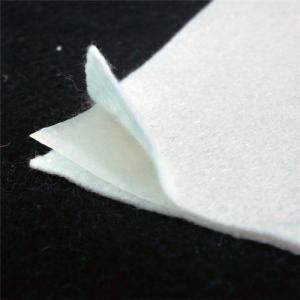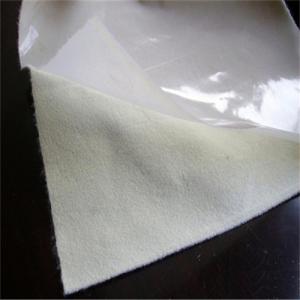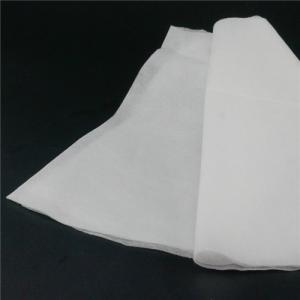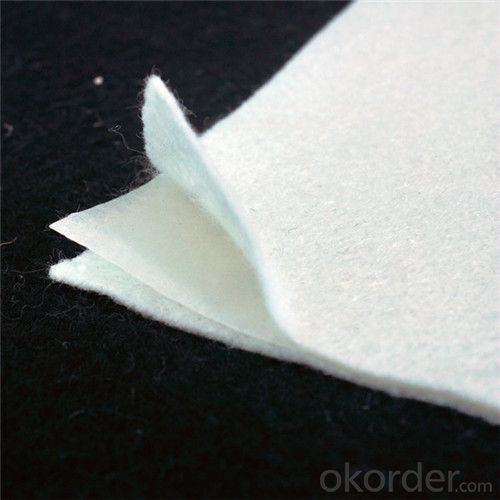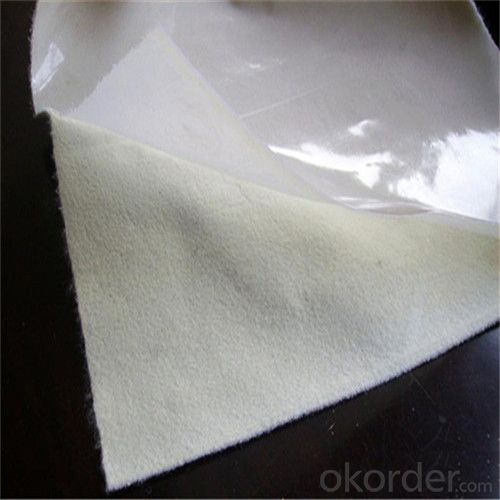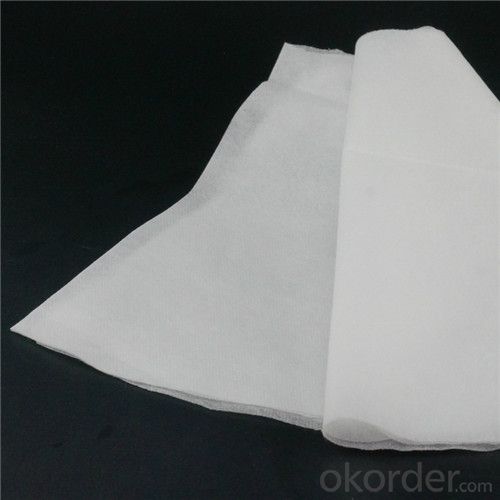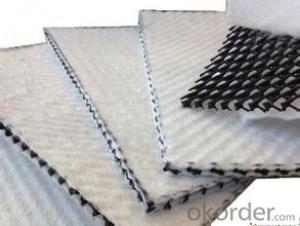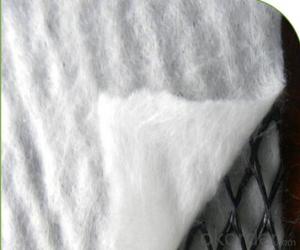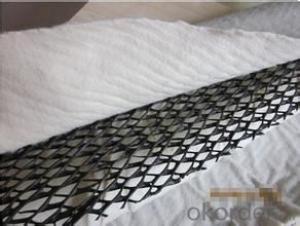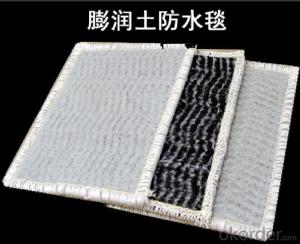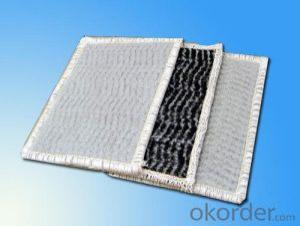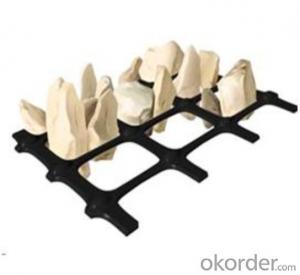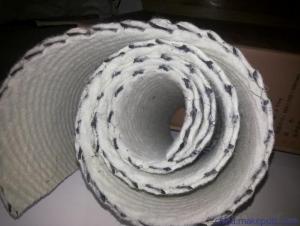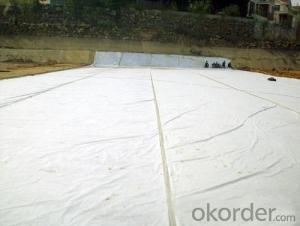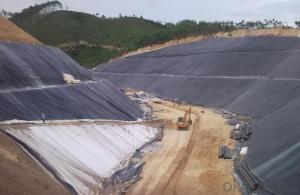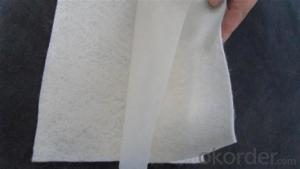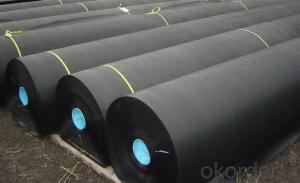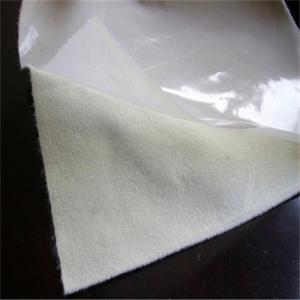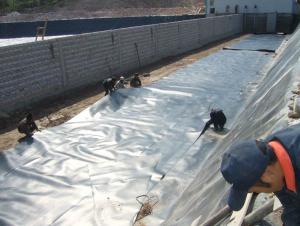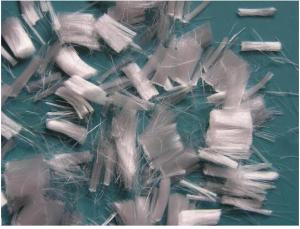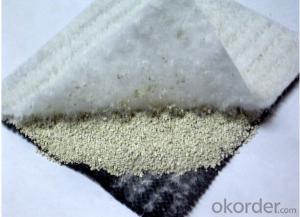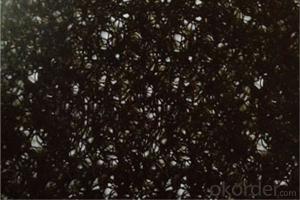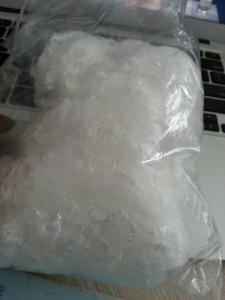Two Cloth One Film Composite Geomembrane for Water Conservancy Reservoir
- Loading Port:
- Qingdao
- Payment Terms:
- TT or LC
- Min Order Qty:
- 1000 m²
- Supply Capability:
- 100000 m²/month
OKorder Service Pledge
OKorder Financial Service
You Might Also Like
Compound Geomembrane Description:
Compound geomembrane is compounded with geotextiles and geomembrane impermeable material, it is mainly used for seepage control, composite geomembrane is divided into a cloth a film, a film and two cloth wide 4 to 6 m, weight of 200-1500 - g/m2, tensile and tearing resistance, bursting physical mechanics performance index is high, can satisfy the water conservancy, municipal, construction, transportation, subway, tunnel and other civil engineering needs. Due to the choice of the polymer material and production process to add the aging proof agent, it can be used in the abnormal temperature conditions.
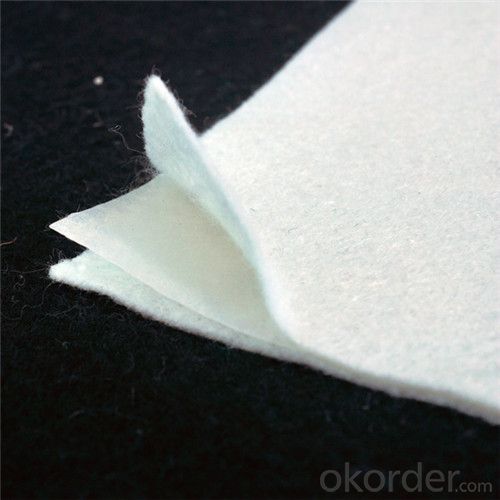
Compound Geomembrane Specification:
1)One geotextile and one geomembrane: geotextile 100-800g/m2, geomembrane 0.1- 1.0mm
2)Geomembrane with geotextile on both sides: geotextile 100-400g/m2, geomembrane 0.2-1.0mm
3)Geotextile with geomembrane on both sides: geotextile 100-800g/m2, geomembrane 0.1-0.8mm
Compound Geomembrane Property:
Good flexibility; separation, reinforcement and protection; waterproofing
Compound Geomembrane Application:
Reinforcement in channel; embankment, reservoir; waterproofing in reservoir; rock fill dam and transportation tunnel.
Compound Geomembrane Packaing
Our packing is strong enough to withstand bumping and rough handling under normal condition.
We can accept add customer's logo on the package.
Our Service
1. OEM Manufacturing welcome.
2. Free Sample to see our quality.
3. We will reply you for your inquiry in 24 hours.
4. After sending, we will track the products for you once every two days, until you get the products. When you got the goods, test them, and give me a feedback.If you have any questions about the problem, contact with us, we will offer the solve way for you.
- Q: How do earthwork products contribute to soil erosion prevention?
- Earthwork products, such as retaining walls, berms, and terraces, play a crucial role in preventing soil erosion. These structures help minimize the impact of rainfall and runoff by controlling the flow of water, reducing its velocity, and allowing it to infiltrate into the soil. By creating barriers and redirecting water, earthwork products prevent the erosion of topsoil, which is essential for maintaining soil fertility and preventing sedimentation in water bodies. Additionally, these products can also help in stabilizing slopes and preventing landslides, further contributing to soil erosion prevention.
- Q: How do earthwork products help with soil erosion control?
- Earthwork products help with soil erosion control by providing physical barriers that prevent soil from being washed away by water or blown away by wind. These products, such as geotextiles or retaining walls, stabilize the soil and protect it from the erosive forces of nature. They also help in redirecting or controlling the flow of water, which further reduces erosion.
- Q: Can earthwork products be customized to specific project requirements?
- Yes, earthwork products can be customized to specific project requirements. Various factors such as soil type, site conditions, and project specifications can influence the customization of earthwork products. By considering these factors, earthwork products can be tailored to meet the specific needs and requirements of a particular project, ensuring optimal performance and efficiency.
- Q: What are the benefits of using sediment basins?
- Sediment basins have a number of benefits, including: 1. Sediment control: They effectively trap and retain sediment, preventing it from entering nearby water bodies and causing pollution. 2. Regulatory compliance: Sediment basins are often required by environmental regulations, so using them ensures compliance and avoids potential fines or penalties. 3. Erosion prevention: By capturing sediment, they help reduce erosion in construction sites, preventing soil loss and maintaining the stability of surrounding areas. 4. Water quality improvement: Sediment basins play a crucial role in protecting water quality by reducing the amount of sediment, pollutants, and chemicals that enter waterways, benefiting aquatic ecosystems. 5. Cost-effective solution: Compared to other sediment control measures, sediment basins are relatively inexpensive to construct and maintain, making them a cost-effective option for managing sediment runoff.
- Q: What are the advantages of using geotextile tubes for coastal protection?
- Geotextile tubes offer several advantages for coastal protection. Firstly, they are cost-effective compared to traditional methods such as seawalls or rock revetments. They require less material and labor for installation, resulting in significant cost savings. Secondly, geotextile tubes are flexible and adaptable to different coastal environments. They can be easily customized to fit the specific needs of each site, making them suitable for a variety of coastal protection projects. Additionally, geotextile tubes are environmentally friendly. They are made from permeable materials that allow water and nutrients to pass through, minimizing any adverse impact on the surrounding ecosystem. They also provide natural habitat for marine life, contributing to the overall biodiversity of the area. Another advantage is their durability. Geotextile tubes can withstand the forces of waves, tides, and storms, providing long-term protection against erosion and coastal hazards. They are designed to resist UV degradation and have a long lifespan, reducing the need for frequent maintenance or replacement. Lastly, geotextile tubes offer a quick installation process. They can be rapidly deployed, which is particularly beneficial for emergency situations or urgent coastal protection needs. Overall, the advantages of using geotextile tubes for coastal protection include cost-effectiveness, adaptability, environmental friendliness, durability, and quick installation.
- Q: How do geocells help in channel lining projects?
- Geocells help in channel lining projects by providing a stable and erosion-resistant structure. They are filled with soil, concrete, or other materials, creating a strong and durable support system. Geocells prevent soil erosion and maintain the integrity of the channel, reducing maintenance costs and ensuring long-term stability.
- Q: What are the benefits of using geogrids in road reinforcement projects?
- Geogrids offer several benefits in road reinforcement projects. They provide increased load-bearing capacity, reducing the need for extensive excavation and grading. Geogrids also improve the stability and longevity of roads by distributing loads more evenly and preventing the formation of cracks and potholes. Additionally, they enhance the overall performance of the road by reducing deformation, improving drainage, and minimizing maintenance requirements.
- Q: How do earthwork products contribute to sediment control in water bodies?
- Earthwork products, such as sediment control barriers and sediment ponds, play a vital role in managing sediment runoff and erosion from construction sites and other land-disturbing activities. These products effectively trap and contain sediment, preventing it from entering nearby water bodies. By doing so, they help maintain water quality, protect aquatic ecosystems, and minimize the negative impacts of sedimentation on aquatic life and habitats.
- Q: Can earthwork products be used for landscaping purposes?
- Yes, earthwork products can be used for landscaping purposes. Earthwork products such as topsoil, mulch, gravel, and stones can be used to create functional and aesthetically pleasing landscapes. These materials can be used for soil amendment, creating garden beds, pathways, retaining walls, and other landscaping features.
- Q: How do earthwork products help with noise reduction?
- Earthwork products, such as soil, gravel, and rocks, can help with noise reduction by acting as natural barriers that absorb and deflect sound waves. When used in the construction of berms, embankments, or retaining walls, these materials effectively block and reduce noise, creating a quieter environment. The density and thickness of the earthwork products play a crucial role in attenuating noise, as they absorb and dissipate sound energy, preventing it from traveling further. Additionally, these products can also help by acting as visual screens, further reducing noise by obstructing direct lines of sight to the noise source.
Send your message to us
Two Cloth One Film Composite Geomembrane for Water Conservancy Reservoir
- Loading Port:
- Qingdao
- Payment Terms:
- TT or LC
- Min Order Qty:
- 1000 m²
- Supply Capability:
- 100000 m²/month
OKorder Service Pledge
OKorder Financial Service
Similar products
Hot products
Hot Searches
Related keywords
